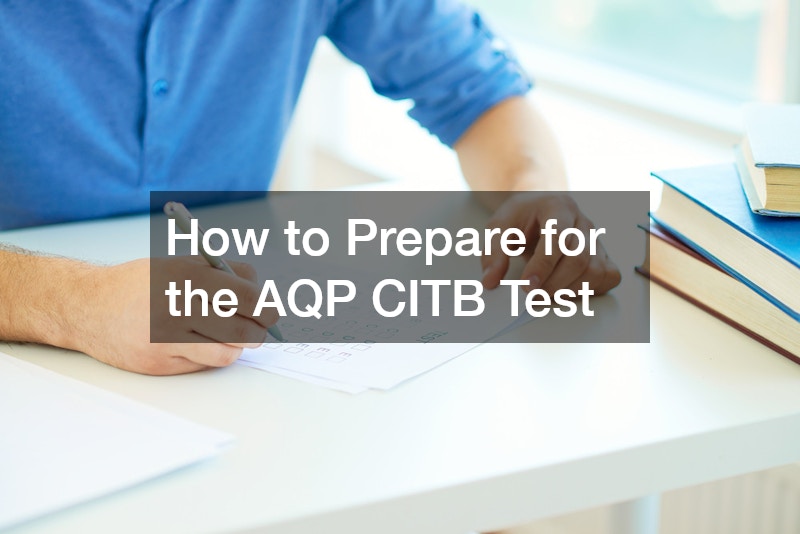The AQP (Advanced Question Paper) CITB test is a crucial certification in the construction industry, ensuring that workers possess the necessary skills and knowledge for safety and competence in their field. Preparing for this test requires focus, understanding of the test structure, and familiarity with the core topics. This guide will walk you through practical steps on how to prepare for the AQP CITB test and achieve success.
Understand the Structure of the AQP CITB Test
The first step in preparing for the AQP CITB test is to understand its structure. The test consists of multiple-choice questions covering various topics related to health, safety, and environmental issues within the construction industry.
Unlike some entry-level assessments, the AQP version is more advanced and intended for those already familiar with the basics of construction safety.
The test is typically divided into two sections:
Core Knowledge: This includes questions on health and safety legislation, hazard awareness, and environmental protection.
Specialized Topics: Depending on your job role, you may be required to answer questions specific to your trade, such as plumbing, scaffolding, or electrical work.
Familiarize Yourself with the Test Format
The CITB website provides sample tests and practice questions, which are invaluable in familiarizing yourself with the test format. These resources will help you get a feel for the timing of the test, the types of questions asked, and the areas you may need to focus on more closely.
You can also download the CITB app, which includes practice questions and timed mock exams. Practicing under timed conditions will improve your ability to manage your time effectively during the actual test.
Study Core Topics Thoroughly
While the AQP CITB test covers a wide range of topics, there are certain areas that are essential for all candidates to understand. Below are the key areas you should focus on:
Health and Safety Legislation
Understanding health and safety laws is critical for passing the AQP CITB test. This includes knowledge of the Health and Safety at Work Act 1974, Construction (Design and Management) Regulations 2015 (CDM 2015), and the role of organizations like the Health and Safety Executive (HSE).
You should also familiarize yourself with regulations covering risk assessments, personal protective equipment (PPE), and safety signage on construction sites. Focus on understanding not just the legislation itself, but how it applies in practical scenarios on-site.
Risk Assessments and Method Statements
Risk assessments are essential for identifying hazards and implementing control measures to reduce risks on-site. A significant portion of the AQP CITB test will focus on your ability to evaluate risk in different scenarios and determine the best safety practices to follow.
In conjunction with risk assessments, method statements are documents that detail how specific tasks should be carried out safely. Being able to understand and interpret these documents is crucial, as many test questions will present you with a scenario and ask for your input on proper procedure.
Fire Safety and Emergency Procedures
Fire safety is another core topic in the AQP CITB test. Ensure you are well-versed in identifying fire hazards, understanding fire safety equipment (such as extinguishers and fire alarms), and knowing emergency procedures, including evacuation routes and safe meeting points.
You may also encounter questions about the correct handling and storage of flammable materials, as well as how to conduct regular fire risk assessments on construction sites.
Environmental Awareness
Sustainability and environmental protection have become increasingly important in the construction industry. The AQP CITB test includes questions on waste management, pollution control, and how to minimize the environmental impact of construction activities.
You should be familiar with the Environmental Protection Act 1990 and the Control of Pollution Act 1974, as well as specific guidelines on waste segregation, hazardous material disposal, and noise pollution control.
Working at Heights and Manual Handling
Many accidents on construction sites involve working at heights and manual handling. The AQP CITB test will assess your knowledge of how to safely perform these tasks.
For working at heights, focus on ladder safety, the use of scaffolding, and fall protection systems like harnesses and guardrails. For manual handling, study proper lifting techniques, the use of mechanical aids, and how to avoid injury when moving heavy loads.
Use CITB Study Materials
CITB offers a range of study materials to help candidates prepare for the test. The Health, safety and environment (HS&E) test revision materials include revision books, DVDs, and practice question sets.
If you’re studying for the AQP CITB test, make sure to obtain the specific version of the revision guide tailored to your profession or trade. These guides cover everything from general safety to specialized topics such as electrical safety, plumbing, or demolition.
Join a CITB Course
Although self-study can be effective, many candidates benefit from enrolling in a CITB-approved training course. These courses are run by accredited training centers and provide a more structured approach to test preparation. Experienced instructors can explain complex concepts, demonstrate safety procedures, and provide hands-on practice in a controlled environment.
Courses also allow you to ask questions, clarify doubts, and receive feedback on areas where you might need improvement.
Watch the video above to learn more about how to prepare for the AQP CITB test!
.


